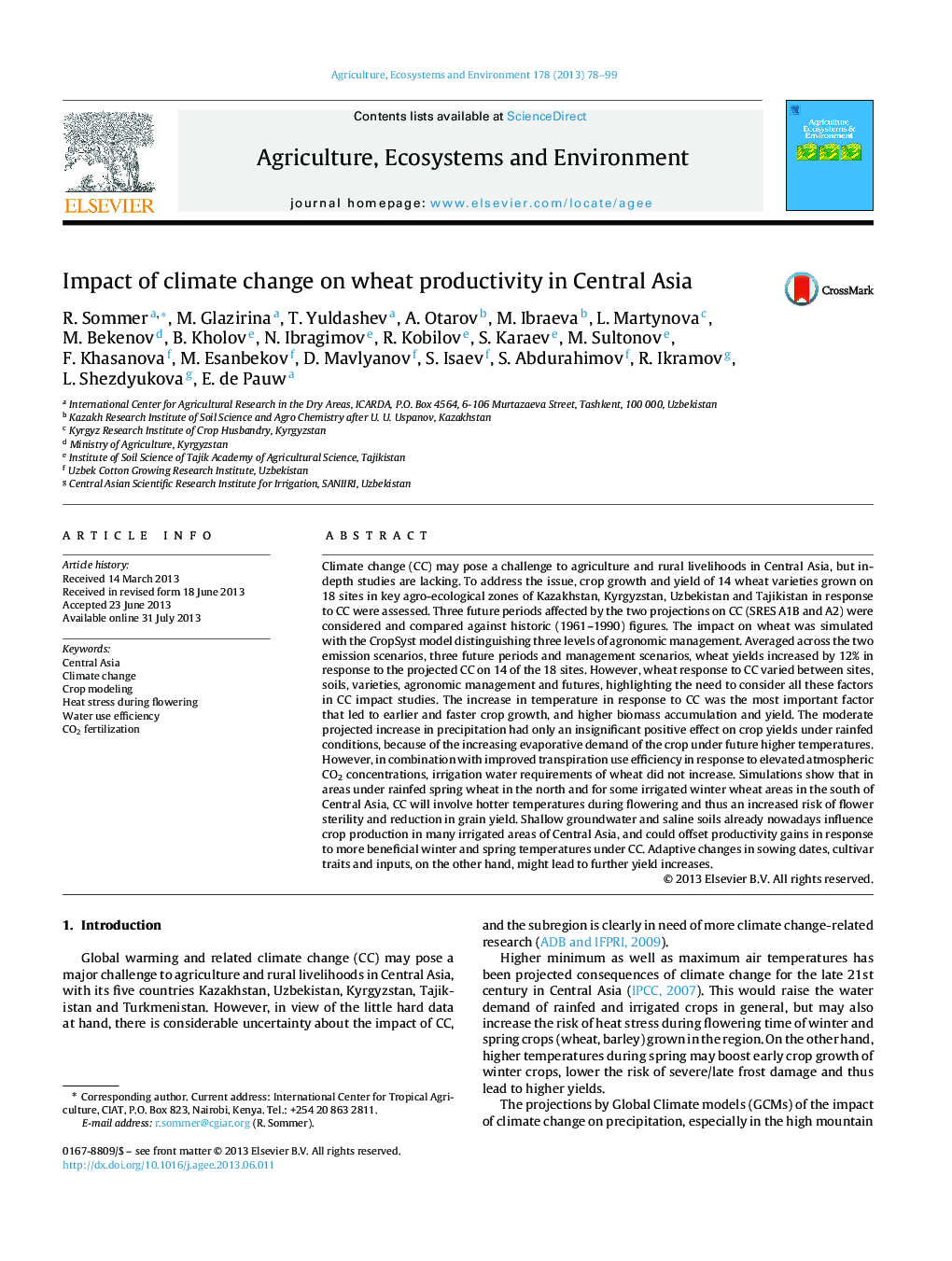| کد مقاله | کد نشریه | سال انتشار | مقاله انگلیسی | نسخه تمام متن |
|---|---|---|---|---|
| 2414228 | 1552074 | 2013 | 22 صفحه PDF | دانلود رایگان |

• Simulated wheat yields increased by on average 12% in response to climate change.
• Climate change induced temperatures increase was the single most important factor.
• In some areas climate change will involve hotter temperatures during flowering.
• An increased risk of flower sterility and reduction in yield is the consequence.
Climate change (CC) may pose a challenge to agriculture and rural livelihoods in Central Asia, but in-depth studies are lacking. To address the issue, crop growth and yield of 14 wheat varieties grown on 18 sites in key agro-ecological zones of Kazakhstan, Kyrgyzstan, Uzbekistan and Tajikistan in response to CC were assessed. Three future periods affected by the two projections on CC (SRES A1B and A2) were considered and compared against historic (1961–1990) figures. The impact on wheat was simulated with the CropSyst model distinguishing three levels of agronomic management. Averaged across the two emission scenarios, three future periods and management scenarios, wheat yields increased by 12% in response to the projected CC on 14 of the 18 sites. However, wheat response to CC varied between sites, soils, varieties, agronomic management and futures, highlighting the need to consider all these factors in CC impact studies. The increase in temperature in response to CC was the most important factor that led to earlier and faster crop growth, and higher biomass accumulation and yield. The moderate projected increase in precipitation had only an insignificant positive effect on crop yields under rainfed conditions, because of the increasing evaporative demand of the crop under future higher temperatures. However, in combination with improved transpiration use efficiency in response to elevated atmospheric CO2 concentrations, irrigation water requirements of wheat did not increase. Simulations show that in areas under rainfed spring wheat in the north and for some irrigated winter wheat areas in the south of Central Asia, CC will involve hotter temperatures during flowering and thus an increased risk of flower sterility and reduction in grain yield. Shallow groundwater and saline soils already nowadays influence crop production in many irrigated areas of Central Asia, and could offset productivity gains in response to more beneficial winter and spring temperatures under CC. Adaptive changes in sowing dates, cultivar traits and inputs, on the other hand, might lead to further yield increases.
Journal: Agriculture, Ecosystems & Environment - Volume 178, 15 September 2013, Pages 78–99